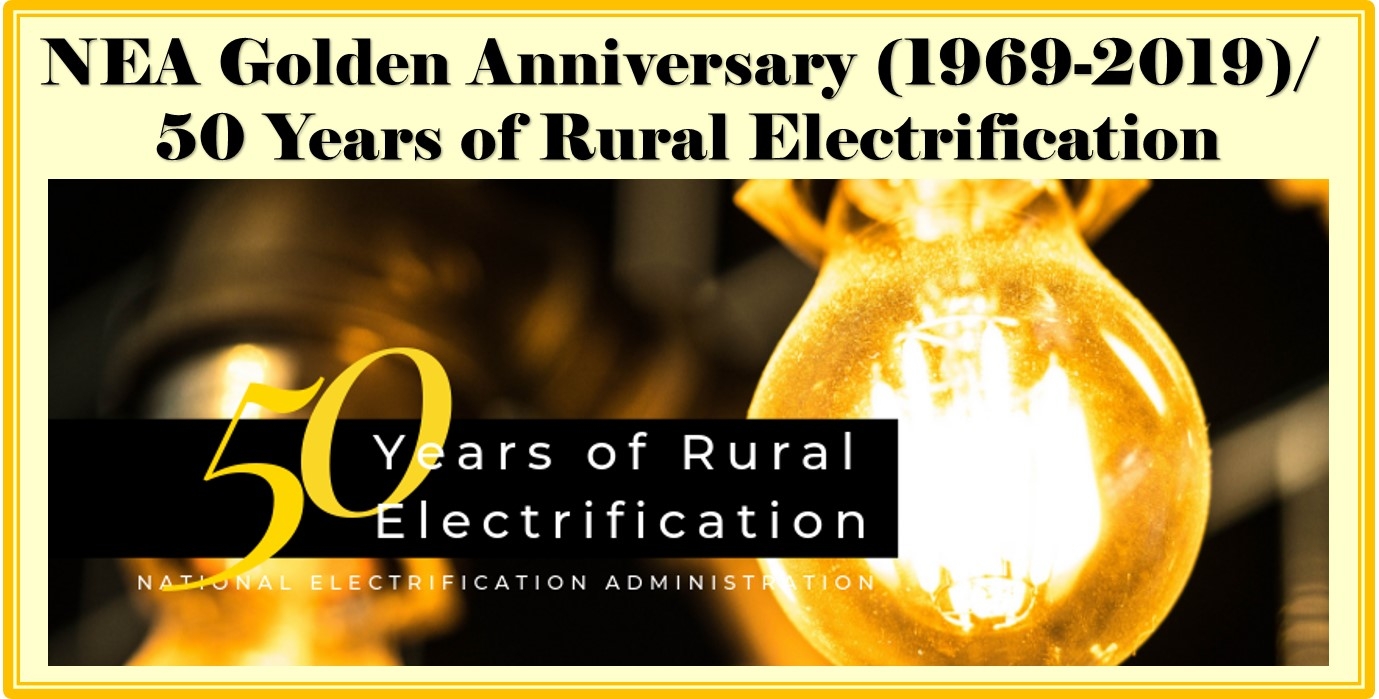
The new NEA is a revitalized corporation focused on strengthening its partners in the rural electrification program, the electric cooperatives, by ensuring that they become more efficient, reliable and globally competitive.
In line with this, the NEA Board of Administrators unanimously approved NEA’s new mandate, vision and mission statements and corporate credo on June 28, 2004. The redefined M-V-M and corporate credo puts a face to the new and reengineered NEA as a result of the EPIRA and reflect the agency’s enhanced role in the power industry. The said statements and credo were formulated to serve as guiding philosophy for NEA as its gears towards global competitiveness in partnership with the electric cooperatives.
We are a highly competent, globally competitive Filipino government-owned and controlled corporation, working with our partners, the Electric Cooperatives, committed to the ideals of the Rural Electrification Program. We take pride in remaining to be the prime mover in the rural electrification sector, by providing quality financial, institutional, and technical services to the ECs and promoting competence enhancement in a deregulated environment aiming towards a strong republic.
The Creation
Origin of the Philippine Electrification
As a nation, the Philippines with its 7,101 islands, 2,800 of which are populated, experienced its first taste of electrification in 1890. Three lamps were installed along a main thoroughfare in the City of Manila.
From1890 to the late 1960s, power generation and distribution were largely controlled by private entities. For the most part, the government was regulating electric installation. In 1936, Commonwealth Act 120 created the National Power Corporation (NPC) and tasked it with developing the country’s hydropower potential. Primarily, the Manila Electric Company (MERALCO) was the largest privately-owned electric utility which contributed to the country’s total generation capacity. Secondarily, there were small generating systems that were installed which were owned by private operators and local government units (LGUs). Due to the profit-orientation of the private utilities, electrification was limited to high-density urban areas only where electric utility operations were considered viable.
With this condition, the government realized that the rural areas were deprived from being program beneficiaries. Thus, agricultural and industrial development in the countryside was snail-paced. The government realized further that the promotion and acceleration of such development could be attained through the provision of cheap and dependable supply of power.
Beginning of Rural Electrification
Due to the inadequacy of power service, the need for an agency to oversee the installation of countryside electrical systems was felt.
It is on this score that the Electrification Administration (EA) was created. In 1960, Republic Act (RA) 2717 was enacted to carry out the country’s electrification policy. The agency was authorized P25 million to be loaned out to the electric utility operators for financing the construction and operation of generating plants, electric transmission and distribution systems for the furnishing of electric energy, particularly in the rural areas.
Despite of the agency’s creation, it was still to be many years before clean, efficient and conventional energy would reach most of the rural Philippines. The electric utility operators deemed that although extending services to the rural areas may be technically feasible; it was far from being practicable. As businessmen, they would see no profits to be made in electrifying sparsely populated countryside and even in upgrading their services. As late as the ‘60s, most of the remote areas were bereft of electricity, some of which enjoyed it only for six to eight hours and only after nightfall. This condition kept the rural economy tied entirely and exclusively to agriculture. Factories and businesses naturally preferred to locate in the cities where electric power was easily acquired.
In 1964, the United States Agency for International Development (USAID) conducted a survey of the country’s power situation. Finding that the electrification program had been moving quite slowly as private utility operators continued to ignore serving the rural areas, the study recommended the adoption of the rural electric cooperative system of the United States.
In 1966, during the state visit to the United States of then President Ferdinand E. Marcos, arrangements were made for USAID assistance in the Philippine Rural Electrification Program. A contract with the National Rural Electric Cooperative Association (NRECA) of the United States was executed. The NRECA made feasibility studies for pilot projects. Two Rural Electric Cooperatives (ECs) were set up, one in Mindanao and the other in the Visayas. These were the Misamis Oriental Rural Electric Service Cooperative, Inc. (MORESCO) and the Victorias-Manapla-Cadiz Rural Electric Service Cooperative, Inc. (VRESCO), respectively.
The first EC, MORESCO got power from the nearby Maria Cristina hydroelectric plants of NPC. VRESCO, on the other hand, had to generate its own power through generators. Both of these ECs became models of future cooperatives.









